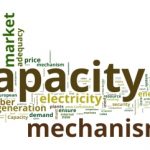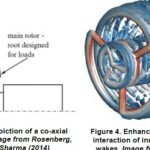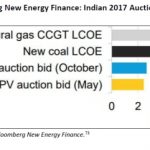How do you double or triple your existing power transmission capacity when costs are rising and you face local opposition to the disruption? Zach Winn at MIT describes a new innovation that uses superconductors designed to transport five to 10 times the amount of power of conventional transmission lines, using essentially the same footprint and voltage level, carried on otherwise standard overhead lines. The superconducting cables (with much of … [Read more...]
Big Data’s huge power demand can migrate globally, instantaneously: implications for planning regional capacity and markets
Something is going to make the planning of regional power generation and associated markets even harder: the ability of big data users to shift their demand across the globe quickly, based on price. Ira Joseph at CGEP peers into the near future to ask some difficult questions. When such power demand can “at the push of a button” migrate long distances, how do you make predictions for local capacity needs? And today, market design in most … [Read more...]
What China, Germany, and Texas tell us about Capacity Adequacy
As intermittent renewables penetrate further into the grid mix, reliable firm power generation is needed for whenever there is a shortfall. But back-up power, by its nature, has unreliable utilisation rates. And up-front costs for new plants are high, be they gas-fired plants, coal, nuclear, or large-scale storage. That makes future profitability uncertain, and private investors nervous. Hence the need for “capacity mechanisms” that guarantee … [Read more...]
10% of global GDP growth came from the new Clean Energy economy in 2023
The clean energy economy is making its mark on global GDP, explain Laura Cozzi, Timur Gül, Thomas Spencer and Peter Levi at the IEA. It accounted for 10% of global GDP growth in 2023, primarily through three activities: manufacturing of clean energy technologies, deployment of clean power capacity, and clean equipment sales. Here, the authors present the in-depth results for four of the largest economies: the U.S, the EU, China and India, which … [Read more...]
U.S. and EU: vastly different approaches to trade and climate put a transatlantic deal at risk
Uncertainty over the results of this year’s elections in the U.S. and the EU have effectively postponed trade deals between the two blocks. That means when talks restart in 2025 there will be even less time to find the best compromises. As Gautam Jain, Noah Kaufman, Chris Bataille and Sagatom Saha at the Center on Global Energy Policy explain, it’s why this time should be taken to better understand the differences and lay out the possible … [Read more...]
Investing billions in new cross-border Electricity Transmission capacity can cover its costs within a few years
The huge divergence of electricity prices between nations after the energy crises of 2021 and 2022 exposed Europe’s pressing need to increase cross-border transmission capacity, explain George Dimopoulos, Conall Heussaff and Georg Zachmann at Bruegel. Without it, generation costs will be higher, emissions too, and new generation will continue to be badly congested. The author’s calculations reveal that one additional MW of cross-border capacity … [Read more...]
China can learn from the EU about power market design and infrastructure build-out
How will China integrate its growing Variable Renewable Energy generation and create a nationwide energy system that avoids the risks of curtailment, stranded assets and blackouts? A good place to start is to learn from Europe. Helen Farrell at ECECP summarises their report that uses the European experience to model scenarios for China. China’s key challenges is that its power market lacks an effective auxiliary service market, a capacity market, … [Read more...]
Europe’s grid bottlenecks are delaying its energy transition
***While you're here... REGISTER NOW for "REPowering the grid for Solar PV" with the Vice-President of Tauron, DG ENER C, Eurelectric and SolarPowerEurope - Online Wednesday September 20 from 11:00 to 12:15 CEST*** No amount of record sales and deployment in Europe of heat pumps, EVs, solar farms, wind turbines and all the rest will guarantee the region meeting its electrification targets if the grids aren’t ready to integrate them. As … [Read more...]
Germany: does the LNG infrastructure build-up deliver energy security or go too far?
A report out this month from the German government says it wants a significant “safety buffer” of new LNG import capacity, to ensure that the country - and neighbouring landlocked states - will receive sufficient supply of natural gas in the coming years. It says an overcapacity is needed in case of failures due to accidents, sabotage or other external factors not under German or EU control. Events have shown that unilateral dependencies in … [Read more...]
Green Hydrogen’s 6,000-fold scale-up by 2050 must far exceed Wind and Solar’s. Is it possible?
To scale “green” hydrogen to make its contribution to limiting warming to 1.5C, electrolyser capacity needs to grow 6,000-fold by 2050 from today’s levels of 600MW, according to the IEA’s Net-Zero emissions by 2050 scenario. Adrian Odenweller and Falko Ueckerdt at the Potsdam Institute for Climate Impact Research, writing for Carbon Brief, summarise their study that concludes even if electrolyser capacity grows as quickly as wind and solar, it is … [Read more...]
Electricity Market Design: how can reforms accelerate the transition and help cut energy prices?
*** REGISTER NOW *** for our online panel discussion on Friday 24th March 09:30-10:45 CET, “Electricity Market Design: how can reforms accelerate the transition and help cut energy prices?” Our panellists are Catharina Sikow-Magny, Director, DG ENER; Wanda Buk, Vice-President for Regulatory Affairs, PGE; Leonardo Meeus, Director of the Florence School of Regulation; Jérôme Le Page, Director for European Electricity Markets, EFET; Michaela … [Read more...]
ELCC: for predicting how much storage a grid really needs
How much storage does a grid need? Too little leads to blackouts. Too much means money wasted. Getting the predictions wrong will skew policy priorities and investments, and slow the transition to a clean electric grid. Effective Load Carrying Capability (ELCC) measures a resource’s ability to produce energy when the grid is most likely to experience electricity shortfalls. Mark Specht at the Union of Concerned Scientists explains how it works. … [Read more...]
NW Europe’s Hydrogen targets: ambition must match reality
The IEA’s report released earlier this year, “Hydrogen in North-Western Europe: A vision towards 2030”, welcomes the fact that the six countries analysed - Belgium, Denmark, France, Germany, the Netherlands, Norway and the UK – have the ambition to build a hydrogen economy. They are Europe’s major hydrogen producers and consumers, have major ports that already service this sector, have natural gas infrastructure that can be repurposed, and access … [Read more...]
Next generation Wind rotors: because “supersizing” is reaching its limit
A great deal of the cost reductions in wind energy have come, pure and simply, from bigger turbines. Their rotors have a greater swept area and access higher wind speeds at elevated heights. But there are practical limits to the size these blades can reach. Challenges include weight, fatigue, manufacturing, reliability, transport and logistics. To push the boundaries of design, teams from the U.S. Department of Energy’s National Renewable Energy … [Read more...]
India: coal plummets, renewables stepping in
In 2018, 80% of India’s total energy lending went to renewables. Coal got the rest, a major fall compared to 2017. No wonder, given coal plants have been running at below 60% utilisation for two years with the operators suffering huge losses. Renewables are now undercutting coal and getting cheaper. And shortages in water – needed for plant cooling – just add to their woes. Vibhuti Garg at IEEFA catalogues the problems, then describes the … [Read more...]
















